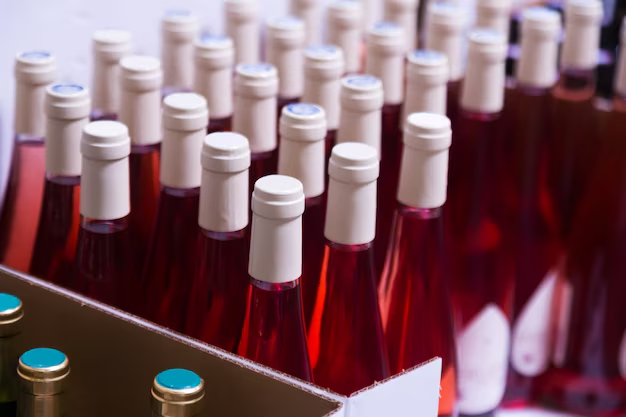Understanding the Optimal Temperatures for Your Wine Refrigerator
Wine aficionados and casual drinkers alike often ponder, what temperature should a wine refrigerator be set to for ensuring the best taste and preservation of their favorite vintages? While the ideal conditions can depend on the type of wine and personal preference, understanding the basic principles behind wine storage can significantly enhance your tasting experience. This guide is designed to shed light on the best practices for storing wine and the nuances of temperature control in wine refrigerators. Let's delve into how you can optimize your wine storage for quality and longevity.
🍷 Why Temperature Matters in Wine Storage
The Science of Wine Preservation
Wine is a living product, and its flavors evolve over time. Temperature plays a pivotal role in this evolution. When storing wine, consistency is key:
- Too Cold: Temperatures below 45°F can cause wine to become dormant, halting the aging process and potentially precipitating tartrates—harmless but visually unappealing crystals.
- Too Warm: Temperatures above 70°F can accelerate aging and spoil the wine, leading to undesirable changes in flavor and aroma.
The Goldilocks Zone for Wine
The consensus among wine experts is that wine should ideally be stored between 45°F to 65°F. It's crucial to maintain this range to protect the wine's integrity and ensure peak taste.
🥂 General Guidelines for Different Wine Types
Different wines have varying storage and serving temperature requirements. Here's how to set your wine refrigerator for different types:
Red Wines
- Optimal Storage Temperature: 55°F to 65°F
- Serving Temperature: 60°F to 68°F
Red wines, especially those with robust flavors like Cabernet Sauvignon or Merlot, thrive in a slightly warmer environment compared to whites. This helps develop complex aroma profiles and enrich the tasting experience.
White Wines
- Optimal Storage Temperature: 45°F to 50°F
- Serving Temperature: 49°F to 55°F
Whites, such as Chardonnay and Sauvignon Blanc, prefer cooler conditions to preserve their fresh and crisp flavors.
Sparkling Wines
- Optimal Storage Temperature: 40°F to 50°F
- Serving Temperature: 47°F to 50°F
Sparkling wines, including Champagne and Prosecco, should be chilled more thoroughly to maintain their effervescence and refreshing qualities.
🍇 Practical Tips for Wine Refrigerator Users
Equipping yourself with the right knowledge gears you up for an optimal wine experience:
- Consistent Check-Ins: Regularly monitor the fridge’s temperature, especially when seasons change, to avoid abrupt shifts.
- Avoid Sunlight: Position your fridge away from direct sunlight and heat sources to maintain a stable internal environment.
- Humidity Controls: While less discussed, humidity is equally vital. Ideal conditions range between 50% to 80% humidity.
🌟 Summary of Key Guidelines
Here's a quick overview to ensure your wine is always at its best:
- Red Wines: 55°F-65°F (Store); 60°F-68°F (Serve)
- White Wines: 45°F-50°F (Store); 49°F-55°F (Serve)
- Sparkling Wines: 40°F-50°F (Store); 47°F-50°F (Serve)
👨🏫 Exploring Wine Refrigerator Features
Understanding different features available in wine refrigerators can make all the difference. Let's examine some that enhance storage:
Temperature Zones
- Single-Zone Coolers: Suitable for enthusiasts with a primary preference or for those storing one type of wine.
- Dual-Zone Coolers: Perfect for individuals who store both reds and whites. Different zones can be set to distinct temperatures for optimal storage.
UV Protection
Modern wine refrigerators often feature tinted glass to protect wines from harmful UV rays, which can degrade wine quality.
Vibration Reduction
Minimal vibration is crucial for storing wine, as excessive movement can disturb sediment and affect aging. Opt for refrigerators designed with vibration dampening technology.
📝 Practical Consumer Tips
To wrap up, here are some handy tips for managing your wine refrigerator effectively:
- 🕵️♂️ Monitor Regularly: Ensure consistent temperatures with regular checks.
- ⚡ Power Backups: Invest in a backup power system if your area is prone to outages.
- 🍽️ Pre-Chill Whites: Before hosting, chill white wines at serving temperatures for optimal enjoyment.
Concluding Wisdom
Whether you're a seasoned connoisseur or a novice wine lover, understanding and implementing these basic storage principles will help you make the most out of every sip. Investing in a quality wine refrigerator and paying attention to the optimal temperature conditions for your wines not only preserves but also amplifies their richness and flavor. With this comprehensive guide, you're well-equipped to safeguard your collection and enjoy it to the fullest. Cheers to wise wine storage and delightful tasting experiences! 🍷
